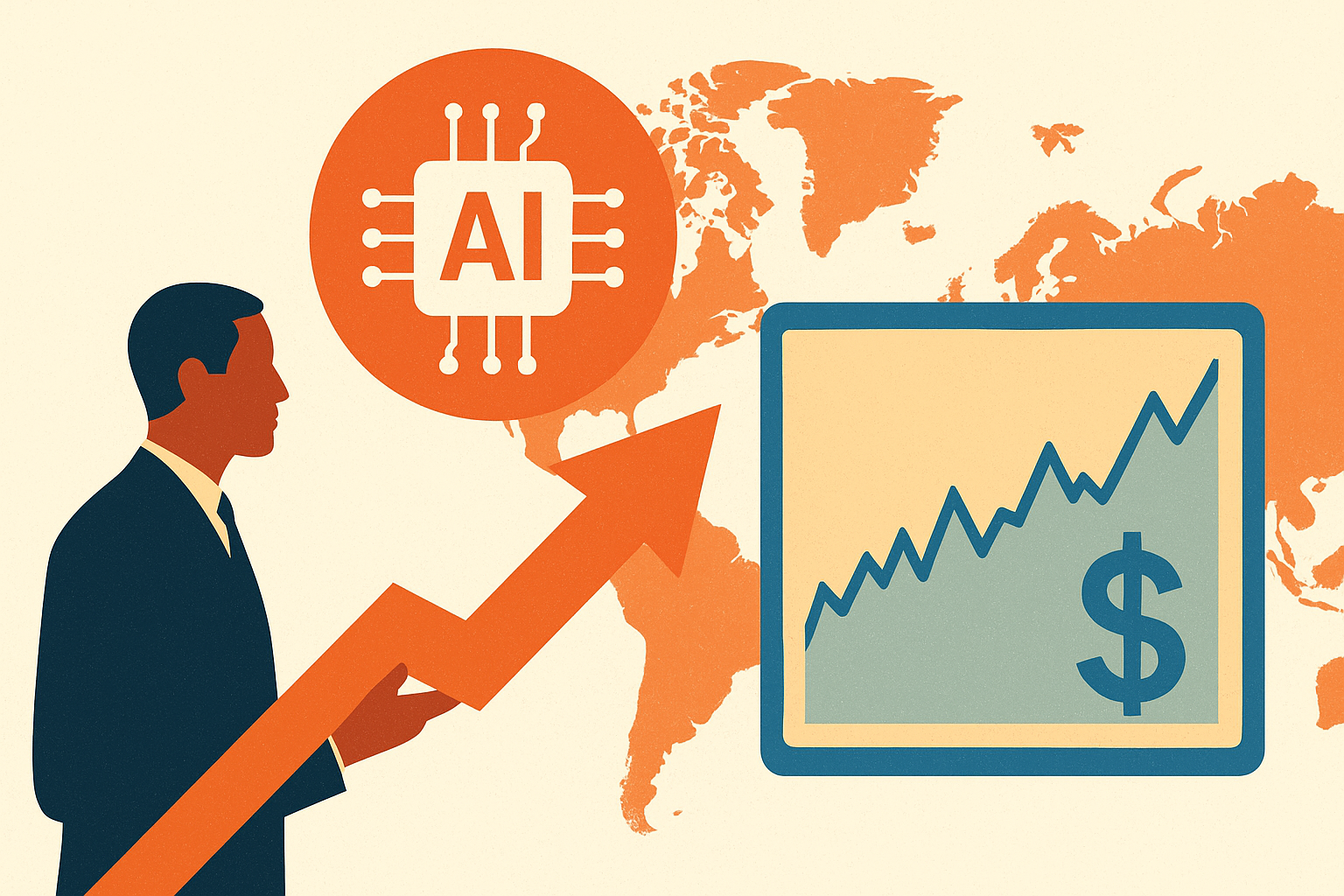Global equity markets have been gripped by volatility in recent months, but investors are once again turning their eyes toward the United States. The renewed interest is being fueled by two dominant forces shaping markets today: optimism around artificial intelligence and expectations that the Federal Reserve may eventually ease policy after holding rates higher for longer.
The Return of Global Capital
After months of outflows from U.S. equities earlier this year, global fund managers are now reallocating capital back into American markets. According to Reuters, the latest positioning data shows renewed inflows into U.S. stocks, reversing a trend of investors seeking relative safety in Europe and emerging markets.
The driver is twofold. On one hand, AI remains a powerful growth narrative, underpinning technology sector resilience even as other parts of the economy show signs of slowing. On the other, the prospect of future interest rate cuts — even if delayed — has revived appetite for risk assets.
“Global investors are being drawn back into U.S. equities by the growth premium that AI provides,” said a senior equity strategist at Goldman Sachs. “At the same time, rate-cut expectations, though pushed out, are keeping risk-on sentiment alive.”
Why This Matters for Investors
This reversal in global capital flows underscores a renewed conviction that the U.S. remains the world’s primary engine of innovation and growth. AI-driven investment continues to prop up megacap tech leaders such as Nvidia ($NVDA), Microsoft ($MSFT), and Alphabet ($GOOGL), while also spilling over into mid-cap semiconductor and cloud infrastructure firms.
The risk, however, lies in market complacency. If the Fed delays easing longer than expected, or if economic data remains stronger than anticipated, valuations could stretch further. The S&P 500’s forward price-to-earnings ratio now hovers near 20x, above its historical average — leaving less room for policy disappointment.
Small- and Mid-Cap Opportunity
One notable dynamic in this capital rotation is the renewed interest in small- and mid-cap U.S. equities. While megacap tech names have dominated market performance, investors are increasingly seeking exposure to companies that may benefit more directly from eventual rate cuts.
Sectors like industrial automation, renewable energy technology, and second-tier semiconductor suppliers are beginning to see increased flows. According to Bloomberg, small-cap ETFs have registered net inflows for the first time in three months, suggesting appetite is broadening beyond the AI titans.
Balancing Growth with Risk
The enthusiasm for U.S. equities highlights the resilience of the American growth story, but risks remain. Key areas to watch include:
- Federal Reserve Policy Path: Markets are currently pricing in a cut in early 2026. Any delay or reversal in expectations could spark volatility.
- AI-Driven Valuations: While AI is transforming earnings potential, some analysts warn of “mini-bubbles” forming in speculative corners of the sector.
- Global Headwinds: Geopolitical tensions and currency fluctuations could affect foreign appetite for U.S. assets.
As Morgan Stanley noted in a recent client note, “Investors should balance their U.S. equity exposure with hedges against rate volatility and dollar strength.”
Key Investment Insight
The renewed rotation into U.S. equities creates both opportunity and caution. Investors should consider diversified exposure — balancing megacap AI leaders with selective small- and mid-cap positions that stand to benefit from easing conditions. At the same time, monitoring Treasury yields and Fed communication remains essential to managing downside risk.
Global capital is returning to the U.S. just as AI continues to reshape growth narratives. Whether this marks the beginning of a sustained rally or a temporary repositioning will depend heavily on the Federal Reserve’s next moves.
Stay informed with MoneyNews.Today for daily updates on global market shifts, investment trends, and actionable insights.





